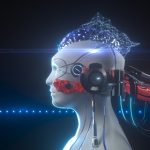Dyslexia remains a significant challenge for millions of children worldwide, affecting their academic performance and self-esteem. In an effort to address this issue, Dysolve, a startup founded by Dr. Coral Hoh in 2017, has introduced an innovative AI-driven platform designed to diagnose and treat dyslexia more effectively and affordably. By leveraging dynamic HTML5 games, Dysolve aims to provide personalized learning experiences that adapt to each child’s unique needs, potentially transforming the way dyslexia is managed in educational settings.
Over the years, various approaches to dyslexia treatment have been explored, often relying heavily on costly and standardized testing methods. Traditional treatments can exceed $20,000 annually, limiting access for many families and educational institutions. Dysolve’s introduction into the market offers a more cost-effective alternative, priced at $1,000 per year for schools or $222 per pupil for individual subscriptions. This pricing strategy could make effective dyslexia support accessible to a broader range of students, addressing a critical gap in educational resources.
How Does AI Enhance Dyslexia Diagnosis?
The AI-powered platform developed by Dysolve evaluates language processing inefficiencies by analyzing how each child’s brain processes information during gameplay. This real-time data collection allows the system to create customized games that target specific areas of difficulty, whether in reading, writing, or math. “Language processing occurs in milliseconds within the brain and demands systems to function at sub-second speeds to keep up. That’s why we designed an autonomous system,” explained Dr. Hoh.
Can AI Improve Long-Term Educational Outcomes?
Early results from Dysolve’s program indicate significant improvements in students’ reading and writing abilities. Some users have moved from the bottom 25th percentile to the 50th percentile within a year. Moreover, Dr. Hoh noted that these improvements often lead to better academic performance, with many students achieving honors in high school and excelling in college after using the platform. The sustained impact suggests that AI-driven interventions can have lasting benefits on educational outcomes.
What Role Does AI Play in Broader Neurological Treatments?
AI’s application extends beyond dyslexia, playing a crucial role in diagnosing and treating various neurological disorders. Institutions like the American Neurological Association utilize AI for conditions such as Parkinson’s disease and epilepsy, enhancing early detection and personalized treatment plans. Dysolve’s approach aligns with these advancements, showcasing the potential of AI to revolutionize educational and medical interventions alike.
Dysolve’s innovative use of AI in treating dyslexia represents a promising advancement in educational technology. By providing a scalable and affordable solution, the company addresses critical barriers to effective dyslexia treatment, potentially improving the lives of countless students. As AI continues to evolve, its integration into both educational and medical fields may offer new opportunities for personalized and efficient interventions.










